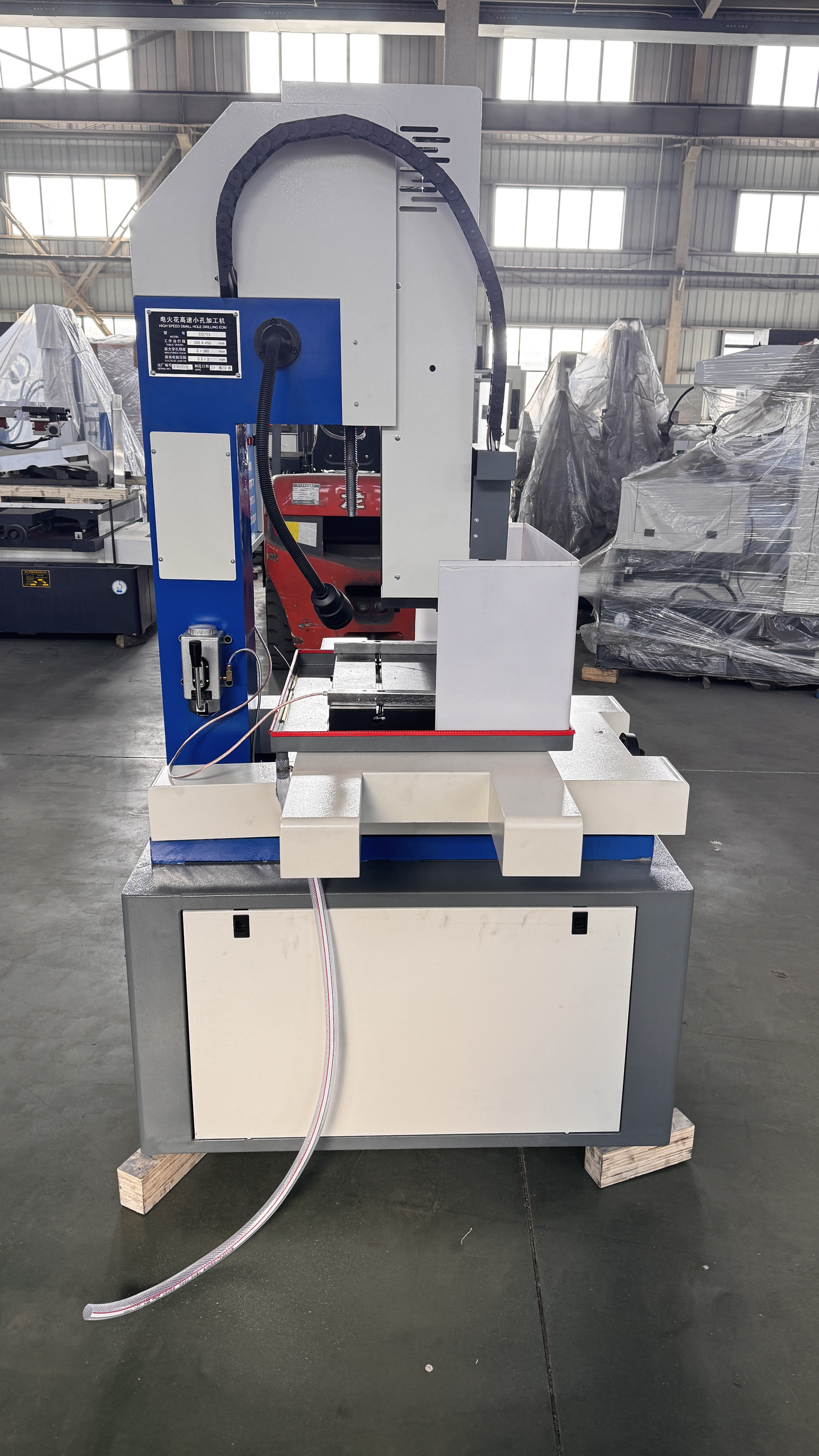Understanding the Revolutionary Impact of EDM Technology in Modern Manufacturing
The evolution of manufacturing technology has brought forth remarkable innovations, and the EDM drilling machine stands as a testament to precision engineering excellence. This sophisticated equipment has transformed the way industries approach high-precision hole-making operations, offering capabilities that conventional drilling methods simply cannot match. From aerospace components to medical devices, EDM drilling machines have become indispensable in applications where accuracy is paramount.
In today's competitive manufacturing landscape, the ability to create precise, intricate features in hard materials has become increasingly crucial. The EDM drilling machine achieves this through a fascinating process that combines electrical discharge with careful material removal, resulting in unprecedented accuracy and surface finish quality.
The Core Principles of EDM Drilling Technology
Electrical Discharge Fundamentals
At its heart, an EDM drilling machine operates on the principle of electrical discharge machining, where controlled electrical sparks erode material to create precise holes. The process begins when a brass or copper electrode approaches the workpiece within a dielectric fluid environment. As voltage is applied, thousands of microscopic electrical discharges occur between the electrode and the workpiece, each spark removing tiny particles of material.
The dielectric fluid plays a crucial role in this process, serving multiple functions. It acts as an insulator until the optimal voltage is reached, helps focus the discharge energy, and flushes away the eroded material particles. This sophisticated interplay of elements ensures consistent and precise material removal.
Precision Control Systems
Modern EDM drilling machines incorporate advanced control systems that maintain optimal spark gaps and regulate the electrical parameters. These systems continuously monitor and adjust factors such as voltage, current, and spark frequency to achieve the desired results. The machine's servo system maintains the precise positioning of the electrode, ensuring uniform material removal and hole accuracy.
The control technology also manages the flushing pressure and electrode rotation, which are critical for achieving straight, accurate holes. This level of control allows operators to achieve tolerances as tight as ±0.0001 inches, making EDM drilling machines ideal for high-precision applications.

Advanced Features and Capabilities
Multi-Axis Positioning Systems
Contemporary EDM drilling machines are equipped with sophisticated multi-axis positioning systems that enable complex hole patterns and angular drilling. These systems can accurately position the electrode at various angles and locations, allowing for the creation of cooling holes in turbine blades, fuel injection nozzles, and other complex components.
The positioning accuracy is maintained through high-resolution encoders and precision ball screws, ensuring repeatable results across multiple parts. This capability is particularly valuable in aerospace and automotive applications where precise hole patterns are critical for component performance.
Automated Operation Features
Modern EDM drilling machines incorporate extensive automation features that enhance productivity and consistency. Automatic electrode changers can manage multiple electrodes, compensating for wear and maintaining hole quality throughout long production runs. Program storage capabilities allow operators to quickly switch between different hole patterns and specifications.
These machines also feature advanced wear compensation systems that automatically adjust for electrode erosion, ensuring consistent hole quality from start to finish. Real-time monitoring systems track key parameters and alert operators to any deviations from optimal conditions.
Applications in High-Precision Industries
Aerospace Component Manufacturing
The aerospace industry relies heavily on EDM drilling machines for creating cooling holes in turbine blades and other critical engine components. These holes must meet extremely tight tolerances while maintaining precise angles and surface finish requirements. The ability to drill these holes without inducing mechanical stress makes EDM drilling machines invaluable in this sector.
Aircraft manufacturers also use EDM drilling for creating fuel system components, hydraulic manifolds, and various other precision parts. The process's ability to work with heat-resistant superalloys and other difficult-to-machine materials makes it essential for modern aerospace manufacturing.
Medical Device Production
In medical device manufacturing, EDM drilling machines are used to create precise holes in surgical instruments, implants, and diagnostic equipment. The process's ability to maintain strict tolerances while working with biocompatible materials like titanium and surgical stainless steel is crucial for meeting regulatory requirements and ensuring patient safety.
The smooth surface finish achieved through EDM drilling is particularly important in medical applications, as it helps prevent bacterial growth and ensures proper fluid flow in devices such as insulin pumps and surgical instruments.
Maintenance and Optimization Practices
Regular Maintenance Procedures
Maintaining an EDM drilling machine requires careful attention to several key areas. The dielectric fluid system must be regularly cleaned and filtered to remove debris and maintain proper conductivity. Electrode guides and other precision components need regular inspection and calibration to ensure continued accuracy.
Operators must also monitor wear patterns on critical components and replace them according to manufacturer specifications. This proactive maintenance approach helps prevent unexpected downtime and maintains the machine's precision capabilities.
Performance Optimization Techniques
Optimizing EDM drilling machine performance involves careful consideration of operating parameters such as voltage settings, pulse duration, and flushing pressure. Operators must understand how these parameters interact and affect the final result. Regular testing and parameter adjustment ensure optimal performance for different materials and hole specifications.
Advanced monitoring tools help operators track machine performance and identify opportunities for improvement. This data-driven approach to optimization helps maximize productivity while maintaining quality standards.
Frequently Asked Questions
What materials can be processed using an EDM drilling machine?
EDM drilling machines can process any electrically conductive material, including hardened steel, titanium, carbide, copper alloys, and various superalloys. The material's hardness does not significantly affect the machining process, making it ideal for working with heat-treated and difficult-to-machine materials.
How does EDM drilling compare to conventional drilling methods?
EDM drilling offers several advantages over conventional drilling, including the ability to create smaller holes with higher aspect ratios, no mechanical stress on the workpiece, and the capability to drill at angles in hardened materials. However, it typically has a slower material removal rate compared to conventional drilling.
What determines the accuracy of EDM-drilled holes?
The accuracy of EDM-drilled holes depends on several factors, including the quality of the electrode material, machine calibration, dielectric fluid condition, and parameter settings. Modern EDM drilling machines can achieve hole tolerances of ±0.0001 inches when properly maintained and operated.




